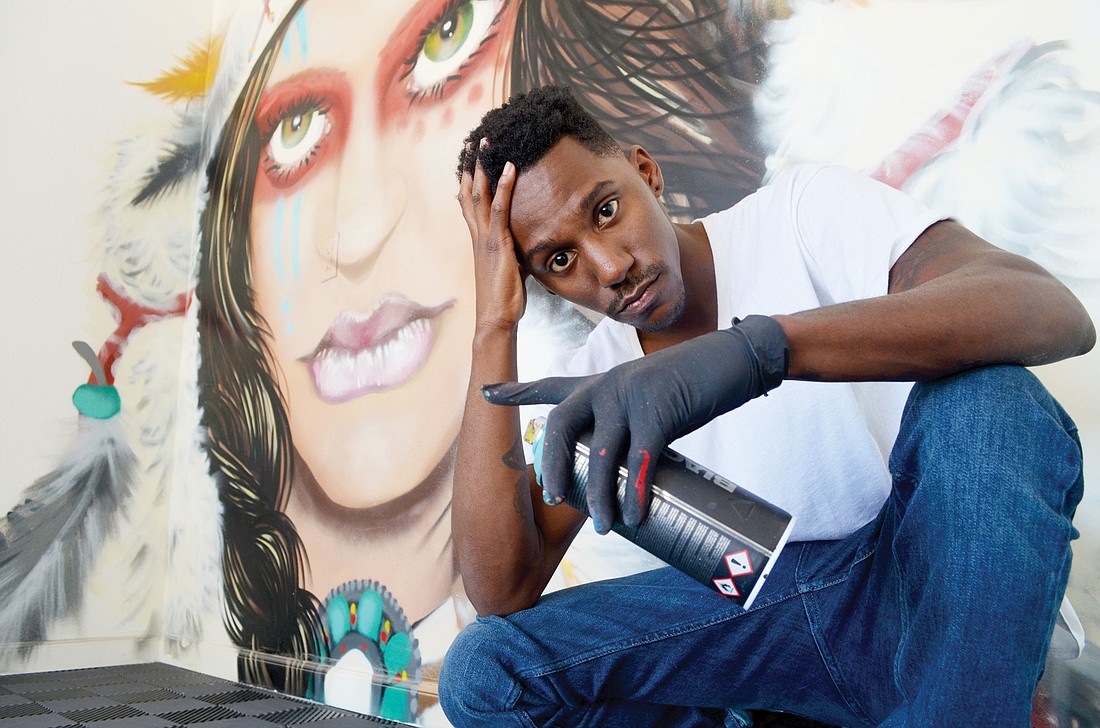- April 25, 2024
-
-
Loading

Loading

To watch Sarasota’s Richie Brasil create his art is an uncommon experience. His arms swirl in all directions while his head turns and bobbles. All the motion is made seemingly without choreography, but you can perceive a polished connection between mind and body. Also, there is an abundance of sweat. Brasil often exerts extreme physical effort all to create a 2-D product.
To most Americans, the word graffiti elicits a negative response. However there is a dedicated group of street artists such as Brasil who practice the craft of can-to-wall art with the hope of changing this perception.
Just like any other artistic medium, graffiti is an expression of its creator — it just happens to often be public.
“Graffiti is in your face and proud,” says Brasil. “One of my duties as an aerosolist is to remove the stigma of graffiti.”
Brasil is not alone in this quest. One has to look no further than the Wynwood Walls program in Miami and its ties to the pre-eminent contemporary art show in America, Art Basel. Every winter at least a dozen of the best-known street artists in the world use walls in Miami’s warehouse district as their canvases.
Sarasota is no exception to this trend. As anyone who regularly travels through Burns Square can attest, Sarasota has its own museum of wall paintings. Although Brasil still creates traditional public art graffiti, his spray cans have recently taken more frequent aim at private homes and businesses — often indoors.
“I try not to sketch my ideas before I take to a wall,” says Brasil. “I work best in that uncomfortable space where there’s a deliberate lack of preparation — driven by nervous energy.”
To hear an artist who began as a 12-year-old with a can of spray paint on the streets of Boston describe nervous energy as a necessary impetus for his art is no surprise. Brasil mastered the touch of the spray nozzle illegally in public places, often in the wee hours of the morning, adrenaline pulsing.
To generate that same energy in the private businesses and residences that have become his recent canvases is a new challenge for the artist, especially when the customer has a specific design request. Brasil says the pressure of performing in a private place can actually be more intense than in public because the customer has to live with the work he creates. In addition, Brasil recently chose to become a full-time aerosol artist, which generates plenty of its own angst. He’s now left to depend only upon the connections between his eye, mind, fingers and spray can.
Brasil left Boston five years ago, seduced by Ringling College of Art and Design and the prospect of shaping his art into a career. Instead of attending class, Brasil realized he possessed the skills to launch an art career without a formal education. In this respect Brasil’s story fits well with the established narrative of street art as “renegade” in comparison with more traditional fine art.
But Brasil dismantles the notion of tension between street art and fine art. Many of his newest pieces are spraypainted directly onto the walls in private residences — places traditionally reserved for works of fine art or other domestic decoration. While many street artists also paint traditional canvas paintings to achieve relevance in the fine art world, Brasil’s work challenges the concession. It skips a step.
Whether street art on private interior walls gains traction as an accepted genre in the traditional fine art world is not for Brasil to decide. All he can control is the art that he creates, an art that has a tradition of transience but is comfortable in its permanence.
“Living like this will keep you on your toes,” says Brasil. “I guess you can say I’m still on the run.”